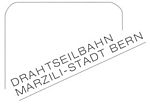The Federal Palace is a building in Bern housing the Swiss Federal Assembly (legislature) and the Federal Council (executive). It is the seat of the government of Switzerland and parliament of the country. The building is a listed symmetrical complex just over 300 metres (980 ft) long. It is considered one of the most important historic buildings in the country and listed in the Swiss Inventory of Cultural Assets of National Importance. It consists of three interconnected buildings in the southwest of Bern's old city. The two chambers of the Federal Assembly, the National Council and Council of States, meet in the parliament building on Bundesplatz.
The oldest part of the Federal Palace is the west wing (then called "Bundes-Rathaus", now "Bundeshaus West"), built from 1852 to 1857 under Jakob Friedrich Studer. The building united the federal administration, government and parliament under one roof. To solve pressing space problems, the east wing ("Bundeshaus Ost") was built from 1884 to 1892 under Hans Wilhelm Auer. Under Auer's direction, the parliament building in the center was erected between 1894 and 1902 to conclude the project. At the beginning of the 21st century, the first comprehensive renovation of the Federal Palace took place.
The west wing on Bundesgasse is the headquarters of two departments of the Federal Administration, and houses the Federal Chancellery and the Parliamentary Library; the Federal Council also holds its meetings here. Two other departments have their headquarters in the east wing on Kochergasse. The sobriety of the two wings corresponds to their main purpose as administrative buildings, contrasting with the more monumental parliament building constructed in neo-Renaissance style with a portico and a striking dome. The rich artistic decoration whose symbolism is based on the history, constitutional foundations and cultural diversity of Switzerland, as well as stone used from all parts of the country, underline the character of the parliament building as a national monument.









